HARRY STEPHEN KEELER!
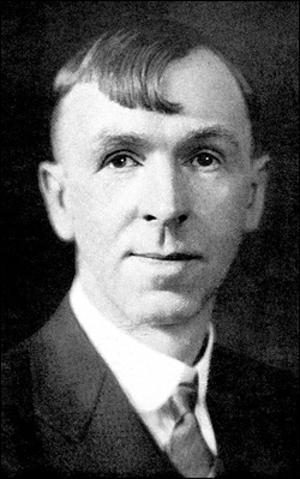 |
I came fairly late in
life
to an appreciation of the unique author Harry Stephen Keeler (1890 –
1967); I heard
about him at various times over the years, but never found any of his
works in used
bookstores. It's difficult to know where to begin in discussing Keeler.
He started writing
and placing stories in
pulps and poverty-row slicks in about 1905, while still a teenager. He
got a degree
in Electrical Engineering from what is now Illinois Institute of
Technology, and much
accurate or plausible discussion of technology appears in his later
novels. His mother
ran a boarding house catering to the theatrical trade, and a
fascination with acting, various kinds of stage acts, carnivals and
circus freaks is obvious in his literary output.
For reasons unknown, Keeler's mother placed him in an insane asylum
briefly
around 1910; he wasn't there long, but he left with a contempt for the
psychiatric profession
which shows up clearly in his novels, where when any “expert opinion”
is
sought from one psychiatrist, a completely opposite opinion is
invariably obtained from another.
His close encounter with those who were genuinely mentally ill also
left marks that
are seen very often in his writing, particularly in his clinical and
non-committal depictions
of various psychopathic characters. There are a large number of
constantly recurring themes in
his fiction, including human skulls, insurance frauds, pulp magazines,
crooked lawyers, Siamese twins, eccentric wills, prisoners awaiting
execution, 1920s-1930s newspaper journalism [he was the editor of
weekly newspaper The Chicago Ledger from 1919 to 1923], secret codes, optometry,
dentistry, drugs with strange effects on mind and behavior, physical
anthropology, bizarre dialects,
accents and slang, acquisition and trading of stocks to gain control of
a corporation,
stock swindles and all kinds of con-games [Keeler was a personal friend of
famous con-man Joe “Yellow Kid” Weil], Chinese laundries, circuses
and carnivals, the
unexpected death of a key character in the very
midst of the action, various kinds of appeals to the radio
listening audience in the midst of a very popular regularly-scheduled
broadcast, the city of Chicago (where Keeler was born and lived out his
life) and often-little-appreciated peculiarities of the human
anatomy.
|
The total number of different novels
written by Keeler in his
career is difficult to estimate, because of his breaking of long novels
into sub-novels that were published individually, and his re-use of
material, particularly early short
stories... but somewhere around 85 seems correct. His first novels
appeared in print
around 1924. From 1916 to 1941 he served as the editor of a
poverty-row pulp,
Ten Story Book. This magazine featured short general
fiction and serialized novels, but evolved to feature pin-up photos,
cartoons, fiction and articles that would be considered titillating for
the day. Despite the contents
of his magazine, Keeler's own fiction, throughout his career,
invariably avoided
the slightest hint of sex or hanky-panky. Keeler boys and girls
invariably fall
in love at first sight, and their only concern thereafter is getting
married
or obtaining permission to wed from some ogre-like parential figure.
It's a bit
rare for Keeler lovers even to kiss, on or between pages. Keeler also
edited America's Humor, a low-end imitation of the more popular
College Humor magazine, and a number of other small-circulation pulps based in Chicago. Keeler's very keen sense of humor is
on prominent display in all his novels, particularly in character names.
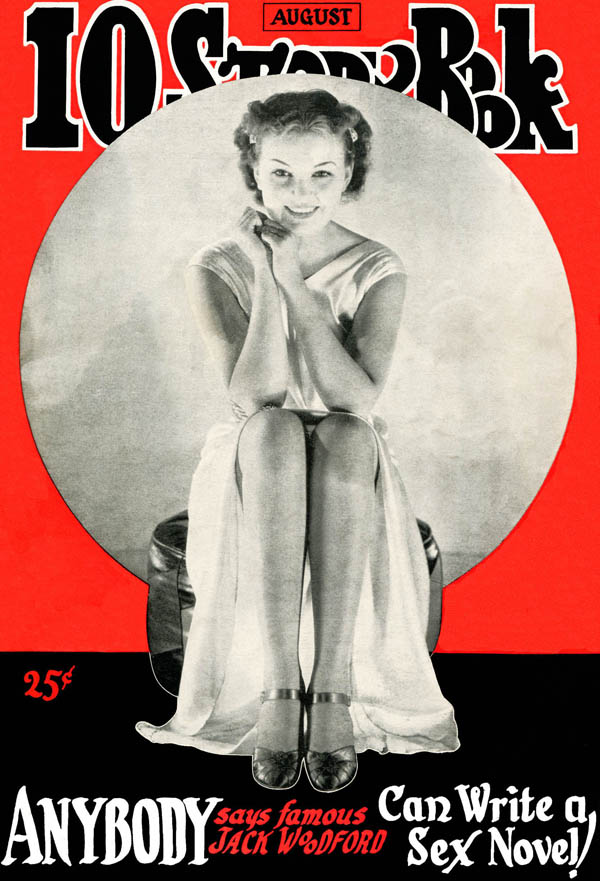 |
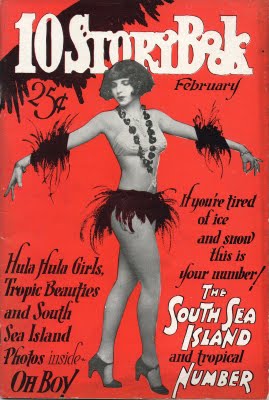
|
Keeler's early novels come close to being conventional
mysteries [The Fourth King (1929) being a typical example], but from almost
the beginning of his professional writing career he was fascinated by the so-called
“web-work plot,” in which a large number of characters, incidents and
situations develop roughly in parallel, with the parallel storylines intersecting at
various unlikely points, until central questions raised during the course of the novel,
such as the identity of a killer or the whereabouts of a missing person, are answered
at the last possible moment, with the solution often involving a plot thread which has
never been developed or presented until the moment of revelation.
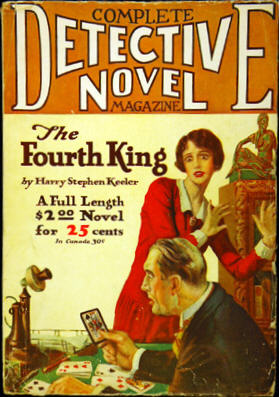 |
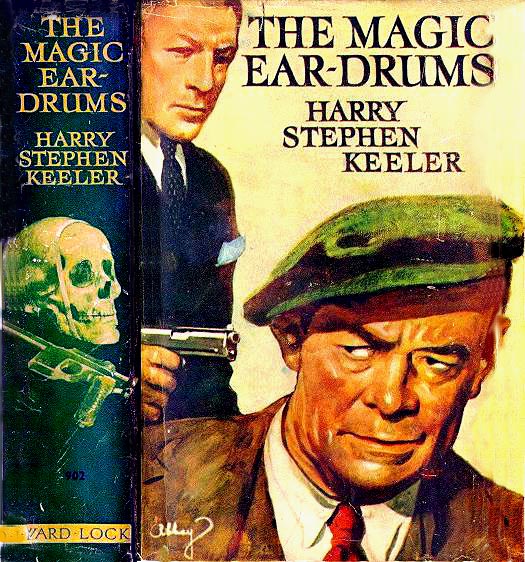 |
Other writers accused Keeler of
violating
all the established tenents of mystery fiction... at least according to
Keeler's proud brag. As his style developed it was not
unusual for a character in a novel to read a diary which was then
reproduced
in full, going on for many chapters; or for two characters to meet and
begin a single conversation
which went on for many chapters, or even a substantial fraction of the
whole novel.
He was dropped by his US publisher in 1942, and by his British
publisher in 1953.
Most of his novels written after 1953 went unpublished in english except for a few
lending library editions issued by Phoenix Press; however, quite a number
of the novels
written between 1950 and 1960 saw print in Spanish and Portuguese
translation.
While much of Keeler's output could be classified as mystery and
detective fiction,
he also produced straight “thrillers” in a Keeler version of the
Edgar Wallace vein, and even some science fiction, fantasy and
historical fiction.
His very long novel, The Box from Japan (1932), could be considered
a science-fiction thriller, with intercontinental 3D TV, spies, dramatic car
chases and much more. The White Circle, written in the late 1940s for science-fiction
publisher Lloyd Arthur Eshbach but never issued by him due to
the financial collapse of his Fantasy Press company in 1950, involves time
travel via what would today be called anchored wormholes.
Keeler might be considered the first of all “bloggers,” because
of his amazing publication, The Keyhole. This was initially a one-page mimeographed newsletter,
sent out occasionally (and free) to about 100 subscribers; it contained personal information about Keeler,
and comments on various people, places and events of the day. After the death of his wife Hazel in 1960,
Keeler ceased working on new novels and put more time and effort into his Keyholes, which grew to several
pages per issue (each page a different paper color), with print runs of more than 1,000 copies.
Considering printing and postage costs of the day, these newsletters must have cost Keeler more than
$50 per issue, a very significant sum of money for the 1960s, especially given his very slim income during that period.
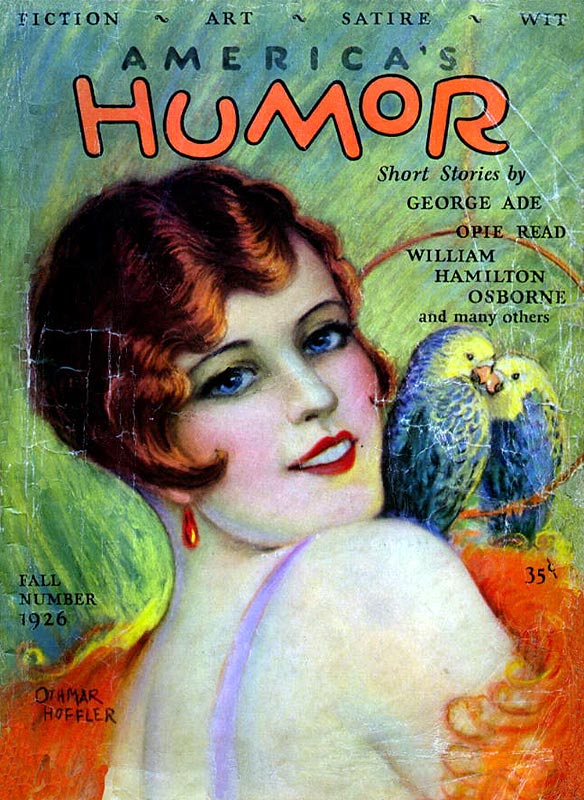
One of several pulps edited by Keeler. |

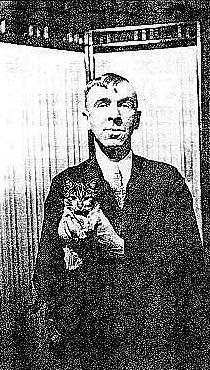 |
There are a number of similarities between Harry Stephen Keeler and another
of my favorite authors, H. P. Lovecraft. For example both men loved archaic or obscure words, and wrote
in a large vocabulary when allowed to do so. But most notably, both Lovecraft and Keeler had a tremendous
love for cats. No hungry and/or cold stray cat was ever turned away from Keeler's door, no matter how
low his funds at the time. His love extended pretty much to all living things, and in one of his Keyholes
he explains how he found a Monarch butterfly which had obviously “given up” and was patiently
waiting to die. Keeler brought the butterfly inside and kept it alive for days, feeding it a mixture of
honey and water and then carefully cleaning it so that it wouldn't get stuck and lose a leg.
Another literary similarity between Lovecraft and Keeler is frequent and detailed references to an
imaginary book, in Keeler's case a compendium of wise Oriental sayings called The Way Out,
in Lovecraft's case the famous compendium of forgotten and dangerous ancient lore, The Necronomicon.
At my current, advanced age (70) I don't think there is much hope that I will
be able to read all 85 of Keeler's novels, not that I would want to. However, readers who are younger and made
of stronger meat will be happy to learn that all of Keeler's literary work, including the Keyholes,
has been brought back into print by Ramble House [named for a boarding house that features in
four or five of Keeler's later novels]. This is a very small outfit which produces very attractive trade
paperback editions of the works of Keeler and other suitably strange authors. Not every book by Keeler is
available at any given time, but all titles have been reprinted at fairly regular intervals so far. Philosophy
Professor Richard Polt of
Xavier University also leads an organization devoted to Keeler and his
works. A notable Keeler scholar, familiar with all of his writings, is St. Louis University
law professor Francis M. Nevins, whose investigative skills
and persistence ferreted out much of the “lost” work of this one-of-a-kind writer.
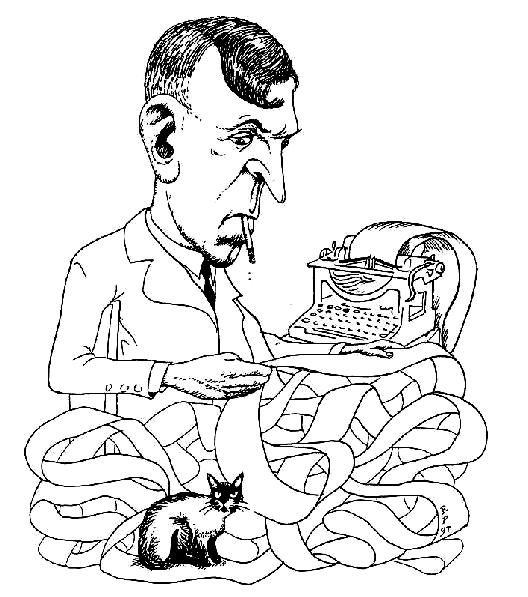
The latest issue of a newsletter devoted to all things HSK.
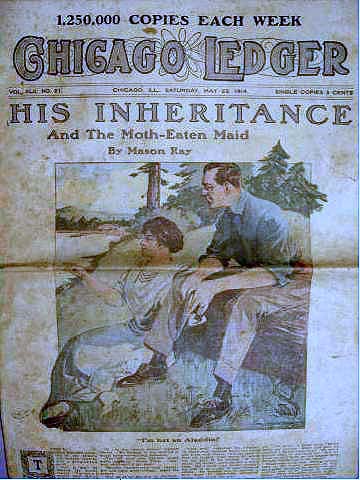
This weekly Chicago paper was edited by Keeler.
Back








